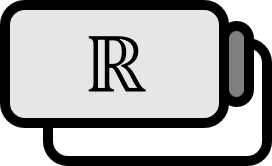Limits Supremum and Limits Infimum
Definition
Let $\left\{ x_{n} \right\}_{n \in \mathbb{N}}$, $\left\{ y_{n} \right\}_{n \in \mathbb{N}}$ be sequences of real numbers.
- $\displaystyle \limsup_{n \to \infty} x_{n} := \lim_{n \to \infty} \left( \sup_{k \ge n} x_{k} \right)$ is called the limit supremum of $\left\{ x_{n} \right\}$.
- $\displaystyle \liminf_{n \to \infty} y_{n} := \lim_{n \to \infty} \left( \inf_{k \ge n} y_{k} \right)$ is called the limit infimum of $\left\{ y_{n} \right\}$.
Where $\displaystyle \sup_{k \ge n} x_{k} := \sup \left\{ x_{k} : k \ge n \right\}$ and $\displaystyle \inf_{k \ge n} x_{k} := \inf \left\{ x_{k} : k \ge n \right\}$.
Properties
- (a): $$ \lim_{k \to \infty} x_{n_{k}} = x \implies \liminf_{n \to \infty} x_{n} \le x \le \limsup_{n \to \infty} x_{n} $$
- (b): $$ \liminf_{n \to \infty} x_{n} = x = \limsup_{n \to \infty} x_{n} \iff \lim_{n \to \infty} x_{n} = x $$
- (c): $$ \begin{align*} - \liminf_{n \to \infty} x_{n} =& \limsup_{n \to \infty} ( - x_{n} ) \\ - \limsup_{n \to \infty} x_{n} =& \liminf_{n \to \infty} ( - x_{n} ) \end{align*} $$
- (d): If $x_{n} \le y_{n}$, then $$ \begin{align*} \limsup_{n \to \infty} x_{n} \le& \limsup_{n \to \infty} y_{n} \\ \liminf_{n \to \infty} x_{n} \le& \liminf_{n \to \infty} y_{n} \end{align*} $$
Explanation
The concept of limit supremum is widely useful throughout analysis, introduced for convenience whether one agrees with it immediately or not. Intuitively, it helps to think about supremum and infimum while ‘discarding the initial part of the sequence’.
For example, when $\displaystyle x_{k} = {{ 1 } \over { k }}$, let’s inspect the actual process of calculating $\displaystyle \sup_{k \ge n} \left\{ x_{k} \right\}$.
$$ n=3 : \sup \left\{ {{ 1 } \over { 3 }} , {{ 1 } \over { 4 }} , {{ 1 } \over { 5 }} , \cdots \right\} = {{ 1 } \over { 3 }} $$
$$ n=4 : \sup \left\{ \quad {{ 1 } \over { 4 }} , {{ 1 } \over { 5 }} , \cdots \right\} = {{ 1 } \over { 4 }} $$
$$ n=5 : \sup \left\{ \quad \quad {{ 1 } \over { 5 }} , \cdots \right\} = {{ 1 } \over { 5 }} $$
$$ n \to \infty : \sup_{k \ge n} \left\{ {{ 1 } \over { k }} : k \in \mathbb{N} \right\} = 0 $$
Thus, discarding the initial part implies that we are interested in speaking about a sufficiently large $n$, and ultimately, it helps us understand its relevance to $\lim$.
Given $\displaystyle \lim_{n \to \infty} \left\{ {{1} \over {k}} : k \ge n \right\} = \emptyset$, therefore, not having $\displaystyle \sup \lim_{n \to \infty} \left\{ x_{n} \right\}$ might make one appreciate why it’s sometimes necessary to introduce expressions like $\displaystyle \limsup_{n \to \infty} = \lim_{n \to \infty} \sup_{k \ge n}$. While limits are considered, it’s sufficient to have $n$, hence it’s reasonable to think in terms of the limit of another sequence $s_{n}$.
On the other hand, considering $\displaystyle y_{n} = {{1} \over {(-2)^{n-1}}}$ gives us $\sup \left\{ y_{n} \right\} = 1$ and $\displaystyle \inf \left\{ y_{n} \right\} = - {{1} \over {2}}$ but
$$ \limsup_{n \to \infty} y_{n} = \liminf_{n \to \infty} y_{n} = 0 $$
This serves as an example for property (b).
